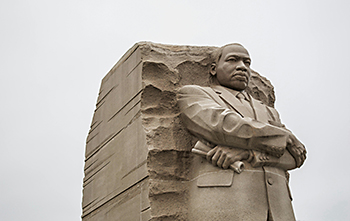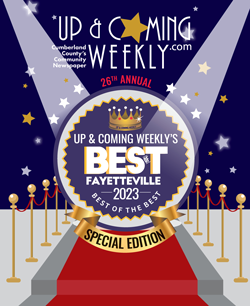
“The ultimate measure of a man is not where he stands in moments of comfort and convenience, but where he stands in challenge and controversy.”
Dr. Martin Luther King
“Sociologists define social movement as an “organized effort to change laws, policies, or practices by people who do not have the power to effect change through conventional channels,” said Francesca Polletta, sociology professor, University of California, Irvine.
“Conflict sets boundaries between groups by strengthening group consciousness and awareness, and separateness from other groups. Conflict is a necessary part of society. It helps society to integrate and to function,” said Georg Simmel, sociologist.
Conflict has positive and negative effects on society. The positive effects are enhanced communication, growth, strengthened relationships, innovation, creativity and opportunities to gain experience and new skills. The negative effects are fragmentation, social disintegration and division. Conflict can create chaos or community.
Civil Rights and Women's Rights are social movements created by a conflict with the legal and cultural inequalities in society. These two movements are organizations of social change.
The success of the Civil Rights and Women’s Rights movements was based on the strategy of participatory democracy. Ella Baker, a Civil Rights Leader, introduced the policy and practice to the Civil Rights social movement.
“Given that, I have been a National Organization of Women Activist and the National Organization of Women was founded as a civil rights organization in 1966. I do believe that the Civil Rights movement was the model for the Women’s movement. We have used the peaceful protest many times since 1966 to bring attention to women’s issues. We recognize the importance of the Civil Rights movement for expansion of voting rights to include women of color. We share with Martin Luther King the preservation of increasing voter rights for all. We have used compassionate collaboration with like-minded organizations to achieve our goals. Our actions have been the inspiration for revolutionary changes in our lives such as reproductive rights, legislation to stem violence against women, and efforts to achieve equity in the workplace for all,” said Roberta Waddle, National Organization of Women activist.
“The Ella Baker Participatory Democracy model is a grassroots organization. It entails 'bottoms up' representation and decision-making from the community, the absence of celebrity as a sole leader and direct action in response to challenges. The goals were achieved by the development of human and community resources, voter registration drives, mass meetings for strategy, peaceful protests, literacy education, and conscious raising,” said Carol Mueller, sociology professor, Arizona State University.
The Women’s Rights Movement adopted conscious raising, peaceful demonstrations and marches for recognition of their concerns. It was a win-win for the Civil Rights and Women’s Rights movements with the Civil Rights Law of 1964 and Title VII. Title VII prohibited discrimination by sex by realities such as pregnancy, sexual orientation, and gender identity.
“History books stated Civil Rights Movement spanned from 1954 to 1968, The Civil Rights Movement remains active today. The words and passion of Martin Luther King empowered the momentum to the Philadelphia 11. It is the term given to the eleven female priests who were ordained on July 29, 1974, two years before the Episcopal Church recognized women were suitable. Statistically, Senior Rectorship are filled by males in churches 77 % vs 23% by females. There is a pay scale differential based on sex. I am grateful and supportive of the changes that have occurred to support women clergy, but there is still much to do. The Episcopal Church recognizes inequality, gender gap, and racial disparities. So much of society wants to stay on the sun deck of true change to admire the horizon, but how many are willing to hang out in the engine room (like the Episcopal Church) where it is hot and steamy to ensure the ship continues to progress in the right direction for Civil Rights?” said Rev. Nancee A Cekuta, Rector, Holy Trinity Episcopal Church.
Poverty and economic justice have been ongoing social movements since the 1964 Watts Riots and Poor People’s Campaign. Why are we still addressing poverty with the continuous allocations for social welfare programs for the past 60 years? Two factors can be globalization and globalism. Globalization began in 1971. International trade and capital flow emerged with the selling of mortgage securities sold abroad. Globalism is the adoption of policies with the intercontinental perspective superseding the national. Globalization is the distribution of technology, products and jobs, across international borders. Finance Capitalism is an innovation of Globalization. Finance Capitalism is economic and political domination exercised by financial institutions or financiers. Finance Capitalism rewards the highly educated and computer proficiency populations. Unions and social welfare programs are a non-issue. Physical laborers and lesser educated have a limited job pool and require social welfare assistance. The impacts of globalization are job insecurity and price instability. Open borders are a factor in Globalization.
“I believe if Dr. Martin Luther King were alive today, first I believe he would speak heavily against the open border policy of the current administration. Dr. King would ask at what expense do we allow for open borders and not consider the less fortunate citizens protected by the U.S. Constitution,” said Dr. A. Jamale Johnson, pastor, Mt. Sinai Missionary Baptist Church.
The U.S. Constitution grants illegal aliens /undocumented immigrants many of the same rights as citizens by the Fourteenth Amendment. The policy of Open Borders can address the lack of border policies or resources for the enforcement of a border policy. Open border policy can create excessive demands on social services, infrastructure and security risks. The positive effects of Open Borders can allow persons from other countries to enter the workforce and augment the labor force.
According to the PEW Research Center, by 1966, 63 % of Americans had an unfavorable opinion of King, including 44% who viewed him highly unfavorable. Today 81% of American adults say he had a positive impact on the country.
“Dr. King would try to rally leaders who had a passion for the welfare of the people. Even though the leaders in Dr. King's era were not all united [on] his approach to non-violence. They did not share the same values for the liberation of Black people. I believe he would want to help and train leaders to address needs in their respective communities,” said. Dr. A. Jamale Johnson, pastor, Mt. Sinai Missionary Baptist Church.
“Two of King’s leadership traits were the encouragement of creativity, innovation, and participation through alliance, teamwork, and diversity, “said Brig. Gen. Al Jamerson, U.S. Airforce.
The writer leaves the reader with a question from Dr. Martin Luther King Jr. “Where do we go from here, Chaos or Community?”

 How to resolve AdBlock issue?
How to resolve AdBlock issue? 









